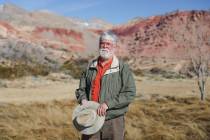A new leash on life
The big dog had been shot in the face. Passersby found him bleeding from the mouth, miserable but well-behaved, lying along the shoulder of U.S. Highway 95 near the Las Vegas Paiute Golf Resort. His front legs were covered in blood.
“You could tell he was in pain,” said motorist Doug Avey, who found him that Sunday in November 2019. “But he let me pet his head.”
A Nevada Highway Patrol trooper eased the 120-pound dog into his cruiser and headed straight for Lied Animal Shelter. The east Las Vegas facility run by the nonprofit Animal Foundation is contracted to serve as the repository for stray and abandoned animals — even gunshot victims — from across Clark County and the cities of Las Vegas and North Las Vegas.
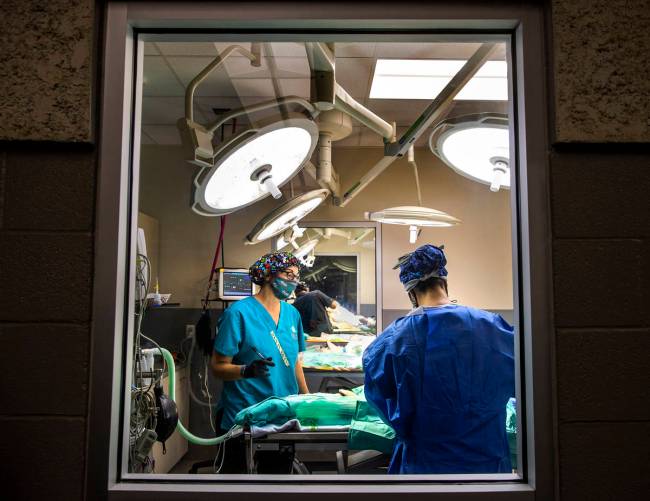
It’s a Noah’s ark refuge of orphaned creatures — mostly dogs and cats, along with the occasional chinchilla, peacock and even a 200-pound black pig named Peppa. Among the highest volume single-site shelters in America, the facility takes in some 30,000 animals every year and is considered a national leader in animal care.
The trooper arrived at a sprawling 8-acre campus that had just completed a major renovation. The Lied (pronounced Leed) shelter, which had previously performed surgeries in outdoor tents and trailers, now featured a hospital-grade operating suite, neonatal nursery for kittens and puppies and new X-ray, CT scan, ultrasound and dental equipment that allowed veterinarians to diagnose and treat in-house a new slate of diseases such as the deadly canine parvovirus.
And all of it was at the disposal of the wounded Great Dane-American bully mix, whom the shelter staff named Dudley.
Shelter veterinarians felt something firm inside the dog’s face: X-rays later showed remnants of a 9 mm bullet. Doctors quickly removed the shell fragments and worked to salvage the dog’s teeth and tongue.
Two years later, nobody knows who shot Dudley or why. But the dog survived — and now has a new home — thanks to a shelter that has equipped itself with the medical tools and expertise to save such a desperately hurt animal and others like him.
Dudley’s story illustrates the remarkable turnaround for a facility that had once been termed a national embarrassment to veterinary care, a place where conditions were so shockingly substandard they helped animal welfare experts shine a light on upgrading the care at other struggling facilities across the U.S.
In 2007, after years of trying to run the shelter as a no-kill facility, officials lost sight of their lifesaving mission. While not putting animals down themselves, they tried to save even creatures considered unsalvageable and were inundated daily by scores of new arrivals with no place to put them.
Conditions resembled a wartime surgical hospital, where each week hundreds of animals that had arrived healthy were dying of infection, starvation and neglect.
That year, the operation was temporarily shut down by consultants from the Humane Society of the United States, who found sick and starving cats and dogs dead in overcrowded cages. The bodies were being removed hourly by overwhelmed staff. The air smelled of disease and decay, with dogs savaging one another for food and space. Many of the 1,800 animals housed there were eventually euthanized.
“I refer to it as the shelter that brought me to my knees,” said Dr. Kate Hurley, director of the Koret Shelter Medicine Program at the University of California, Davis and a member of the team that inspected Lied in 2007. “I was literally holding my face in my hands in the dog runs, just crying, over what I saw there.”
The circumstances led Hurley and her colleagues to conduct a major review of conditions at animal shelters nationwide. “I used it as a learning tool,” Hurley said. “I was a woman on a mission.”
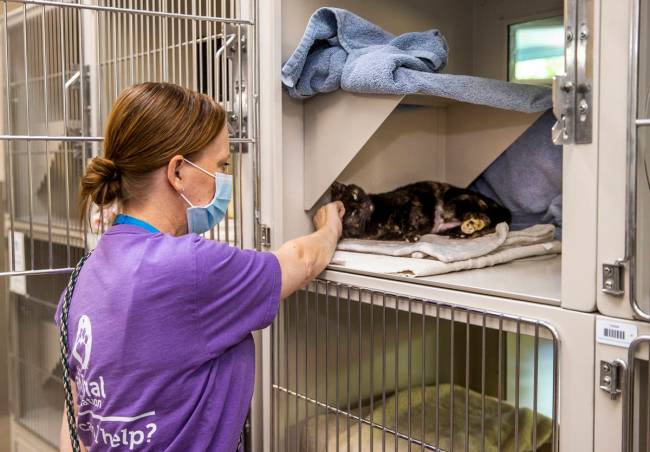
She helped develop new national standards of care in shelters for cleanliness, safety, disease control and the basic well-being of animals.
“What was going on in Las Vegas was an extreme example of something happening in a number of facilities around the country,” she said.
The Animal Foundation quickly brought in a new shelter director. Christine Robinson was a high-level Clark County executive with no experience working with animals.
For the foundation, her hire was a Hail Mary pass in an hour of desperation.
The Animal Foundation was founded in the 1970s as a high-volume, low-cost spay and neuter organization. That changed in 1995, when the city of Las Vegas contracted with the group to expand its role and house stray and unwanted animals.
That first year, 18,000 came in. More soon would follow.
In 2005, Clark County and the city of North Las Vegas contracted to join the arrangement. Suddenly, an average of 135 new animals arrived each day at the shelter. In 2006 alone, 52,000 animals were taken in.
The shelter became so overcrowded that even healthy dogs and cats became sick, losing any chance for adoption, frustrating handlers who lacked proper training or adequate medical supplies. Dog runs meant for one animal often held a dozen. Some didn’t get to eat. Others were so busy protecting their food they didn’t eat either. It was the same with the cats. The next day, scores more animals arrived.
In early 2007, Animal Foundation officials invited veterinary experts to inspect the shelter. “They didn’t think they were doing anything wrong,” Hurley said. “They considered this amount of sickness and disease the price you paid to operate a public no-kill animal shelter at that scale. They considered themselves a model operation.”
The horrific conditions Hurley encountered included the presence of a fast-moving respiratory disease among dogs that had never before been documented in U.S. shelters, one in which an affected animal would appear healthy in the morning, be bleeding from the nose at noon and dead by dinnertime.
After writing her report, Hurley didn’t sleep well for weeks.
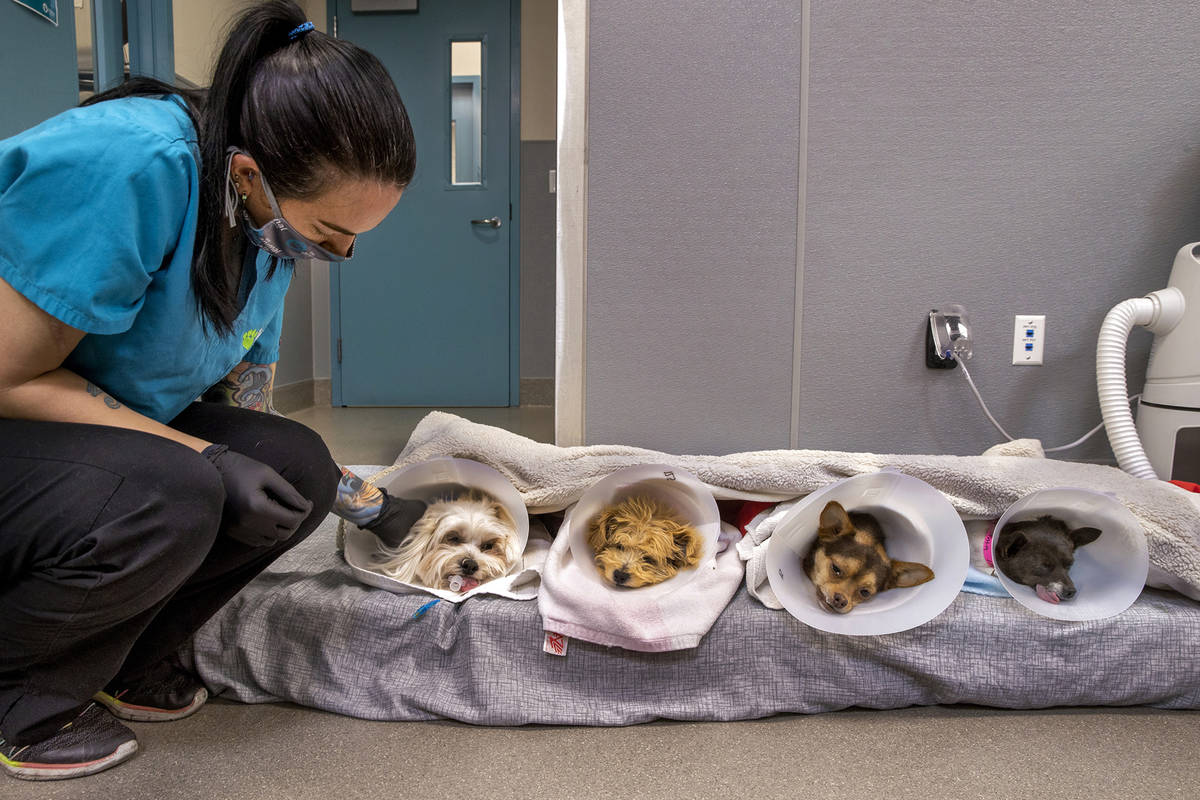
‘Misguided plan’
“Dozens of animals were dead or dying from a variety of serious illnesses; hundreds of animals in every area of the shelter were sick; dogs were starving due to lack of access to food in overcrowded runs, and attacks upon kennel mates were frequent,” the report stated. “Aisles open to the public were slick with diarrhea, vomit, and blood from sick and dying animals. Carcasses were left in cages during open hours, as overwhelmed staff scrambled to keep up with removal of the bodies.”
The situation became a national story, and shelter chairwoman Janie Greenspun Gale admitted the facility had not euthanized enough animals to keep the space safe and sanitary for the adoptable ones. “Our policies were written to save every animal we possibly could,” she told a packed public meeting. “In that misguided policy, we caused animals pain.”
Then-Las Vegas Mayor Jan Jones remembers the nightmare. “In government, sometimes these kinds of things happen,” said Jones, who now sits on the Animal Foundation board. “All I ever focused on was how to fix it. Pieces were broken, not the concept. We just needed the right management and the right facility.”
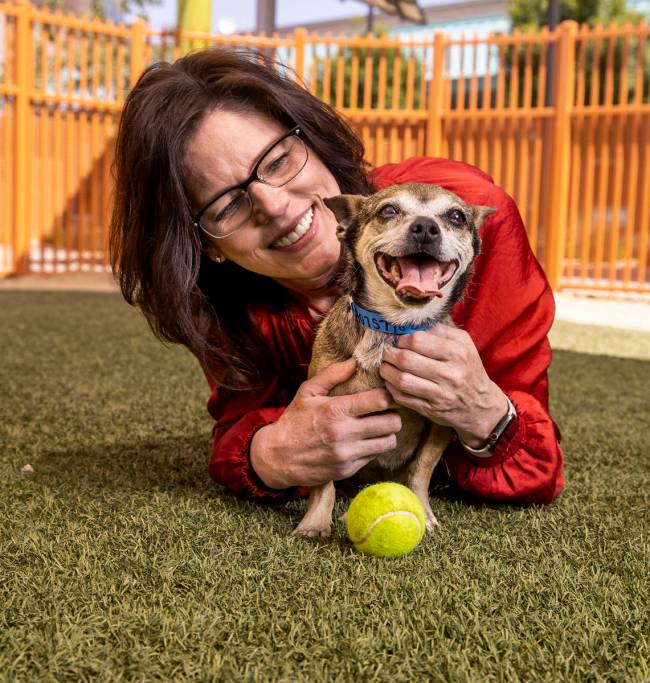
At the time, Robinson and her partner Betsy Fretwell, then a deputy Las Vegas city manager, were having their regular dinner with a longtime friend. Just days before the Humane Society’s shelter inspection, veteran public administrator Thomas Reilly had been hired on as a consultant at the shelter.
Reilly explained how the organization needed a new leader.
The usually low-key Robinson then said something no one saw coming.
“I’ll do it,” she said.
At the time, the 37-year-old Robinson was an assistant Clark County manager whose considerable public salary and benefits would be slashed in the new position. An animal lover with two dogs and a cat, she had no experience whatsoever in running an animal welfare nonprofit, especially one that was among the nation’s busiest, and now in dire straits.
Everyone at the table looked at her.
“Are you serious?” Reilly asked. “Don’t kid me.”
She wasn’t joking.
“I was watching this animal nightmare unfold from afar like everyone else in the community,” she said. “I’m a logical, thoughtful, planner type, and it wasn’t my way to just raise my hand like that. But I saw an opportunity to marry a personal passion with a business skill set. I just thought I could help.”
Robinson got the job, yet had no idea what she was signing up for. She quickly learned Las Vegas brought in as many animals a year as Los Angeles County, which had six shelters. “We had one,” she said.
Robinson launched a new approach to run the nonprofit with levels of oversight more common to businesses, but “with animal care at the forefront.” The moves included programs aimed to lessen the number of animals brought to the shelter in the first place.
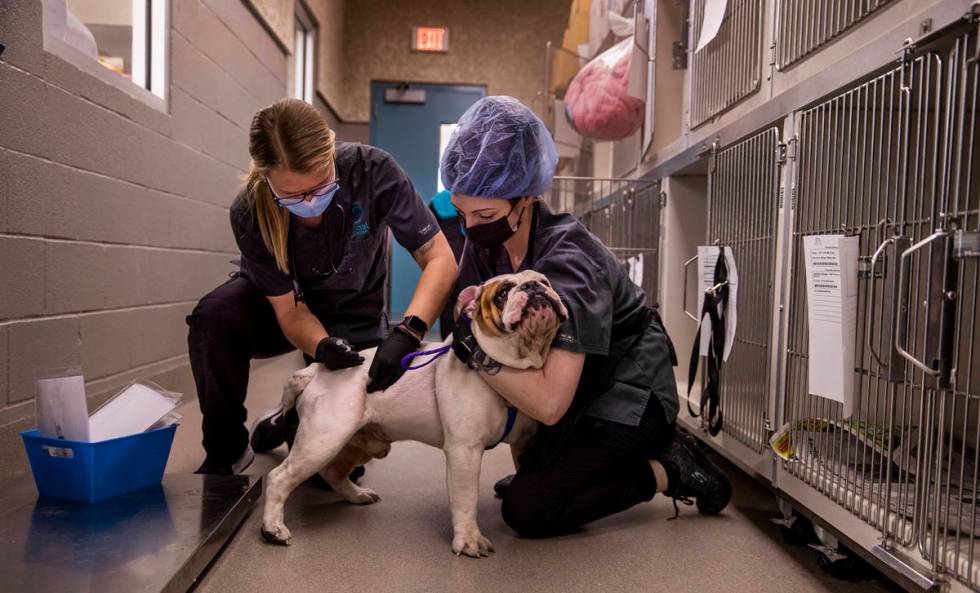
‘Like a MASH unit’
Six months later, Hurley and a veterinarian colleague on the inspection team were in Las Vegas for a conference, and reluctantly decided to pay a surprise visit to the shelter whose conditions had once traumatized them.
“I didn’t know if I wanted to go back there,” Hurley recalled. “I remembered the odor of parvo and bacteria and feces. But when we walked in, the first thing I smelled was a faint odor of bleach and cleanliness.”
Now, instead of 13 dogs inside a kennel, there was one. Every animal had a bed, with a sticker on its cage to show it had been vaccinated. “Basic things,” Hurley said, “but transformative.”
Before, Hurley said, there had been a cacophonous barking of sick and frightened dogs. “Now there was quiet.”
The inspectors asked the new shelter director how she had managed such progress. Robinson said she merely followed the guidelines suggested in the recent Humane Society report.
“It was a handbook, a step-by-step guide to make conditions better,” she said.
But as Las Vegas reeled from an economic recession beginning in 2008, the shelter’s euthanasia numbers remained unacceptably high. Feral and sick cats were destroyed at a rate of 81 percent.
“The numbers were higher than we wanted, and it was taking an emotional toll on staff and volunteers,” Robinson said. “I have described the place as being like a MASH unit. Tuesday was like Wednesday was like Thursday.”
Eventually, the Animal Foundation was challenged by a grassroots faction run by a former Lied shelter volunteer, which in 2014 tried unsuccessfully to wrest the region’s $4 million animal services contract from Robinson and her group.
No Kill Las Vegas members staged protests outside the shelter and publicly attacked Robinson, accusing her of running a “kitty concentration camp” and putting down animals with even minor health issues. Said No Kill Las Vegas leader Bryce Henderson: “We vilified her, because she was a villain in our eyes.”
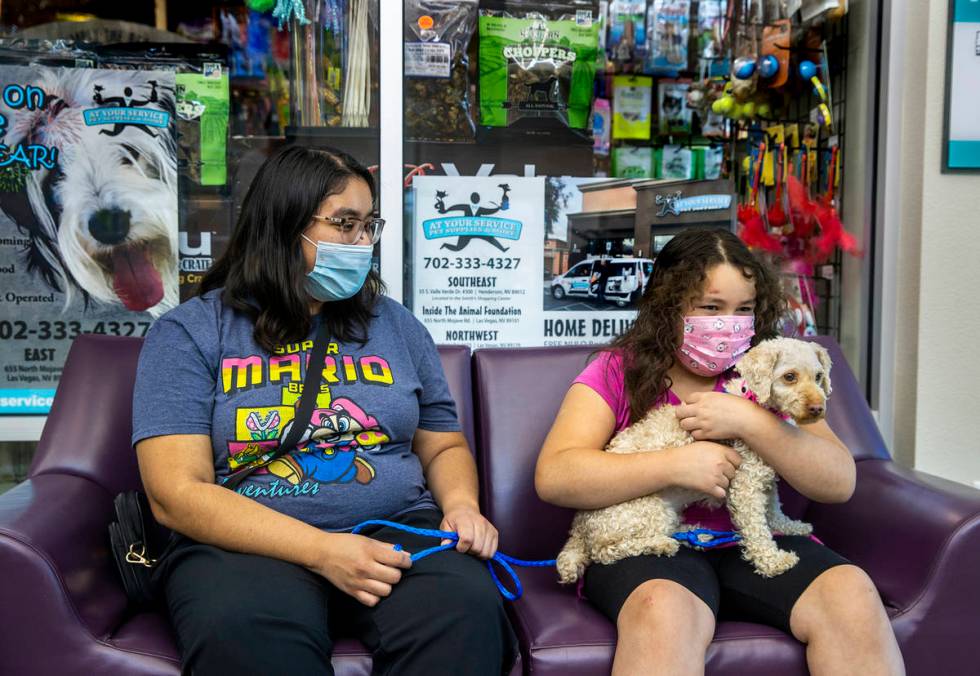
‘A huge about-face’
In 2014, Hurley returned to Lied for a second inspection, and her report lauded the shelter for “sweeping changes to animal care practices, staffing and organizational operations.” But even more could be done, it concluded.
The following year, the Animal Foundation launched Mission Possible 2020, a five-year plan that featured a $32 million renovation of the sprawling campus — paid in half by private donations — including a new 28,000-square-foot Engelstad Adoption Center and updates to the existing 40,000-square-foot shelter building.
The initiative also discontinued euthanasia as a tool for population management. From 2015 to 2020, the shelter cut its euthanasia rate by 78 percent, from 10,163 to 2,272. “We are no longer euthanizing any animal that comes to us in a healthy or treatable condition,” said Christi Dineff, the director of lifesaving programs. “We no longer make decisions based on space, time or lack of available care.”
The shelter sends to smaller partners its most-challenging animals. In its “Community Cats” program, animals found in the community are spayed and neutered and then returned to where they were found. Some 1,800 pet foster parents help keep the facility’s animal volume down by housing them temporarily.
Yet the shelter still has its critics.
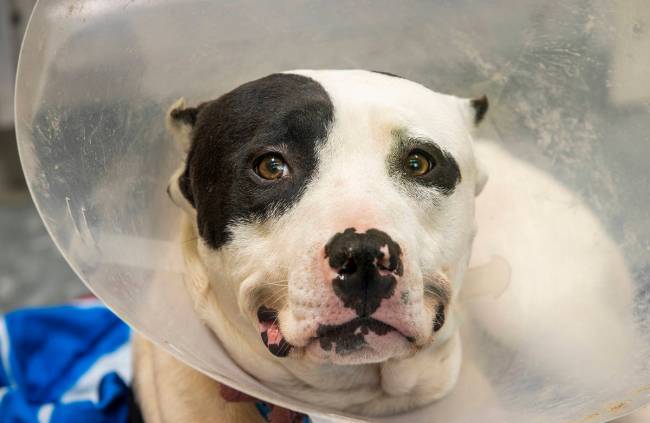
For his part, Henderson applauds the drop in euthanasia rates. “They did the hard work, implementing changes,” he said. “But you have to give the community credit for putting on the pressure for change.”
He did not consider the turnaround remarkable: “I’d say it’s about time. Most shelters could have made the changes in a year, not 15. The animals paid the price.”
Hurley defended the shelter she now champions.
“You could say 15 years is too long, knowing what we know now,” she said. “But big ships take longer to turn.”
Lied is now among a handful of shelters nationwide meeting strict new standards of animal care outlined by the Association of Shelter Veterinarians, the authority in the shelter medicine industry.
“This was the shelter that prompted the new guidelines in the first place, and they have made a huge about-face from those original deplorable conditions,” Hurley said. “They have changed the equation. Now animals are leaving that shelter alive.”
‘A beautiful character’
On a recent day, the Lied shelter is going about its business. In the operating room, site to 70 procedures a day, veterinarians perform canine neutering and ovario-hysterectomies. Nearby, dogs awaiting surgery bark and wag their tails, pressing their noses to the cages.
Nearby, in the center’s adoption center, a colorful sunlit space that last year found homes for 10,000 animals, 8-year-old Aramia Sanadria cuddles her first-ever pet, a cream-colored poodle mix named Lola. She can’t wait to get home.
Dudley is already home.
Fiona Sibelrud and her husband, Richard, two years ago adopted the traumatized dog that had been shot in the face, but Dudley has since emerged from his ordeal. Sure, he’s missing a few teeth and his tongue remains crooked following the surgery to repair his face, but he’s a new dog.
With his blue-gray coat and piercing amber eyes, Dudley is working with a trainer to curb his rambunctious instincts.
“He’s just so goofy,” said Fiona, a teacher’s assistant who works with autistic children. “He loves to sleep in our bed and that dog hugs us with his paws and legs. He’s such a beautiful character.”






